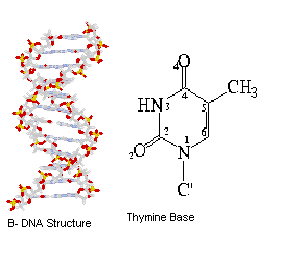
UV Light.
Ultraviolet radiation (UVR) reaching the Earth’s surface can be divided into UVB (290-320 nm) and UVA (320-400 nm). UVA can be further subdivided into UVA I or far UVA (340-400 nm) and UVA II or near UVA (320-340 nm).

Ultraviolet light is particularly dangerous since it kills the cells by damaging their DNA. A reaction is initiated by the natural sunlight and a reaction between two thymine bases, which make up the DNA, commences. This results in a thymine dimer and this is very stable. Even so, DNA repair is fairly efficient, but the longer the exposure to UV light, the greater the chance of an incorrect repair or a “missed” dimmer. This is because more thymine dimers are formed.

Once cellular processes are disrupted due to an incorrect repair or a “missed” dimer, the cell cannot carry out its normal functions. This then leads to two possibilities that depend on the location and the extent of the damage. The first of these is when the damage is not too extensive, and then the result is the creation of cancerous or precancerous cells from healthy cells. It is when the damage is widespread that the cell will die.
Click here for the active ingredients of sunscreen.